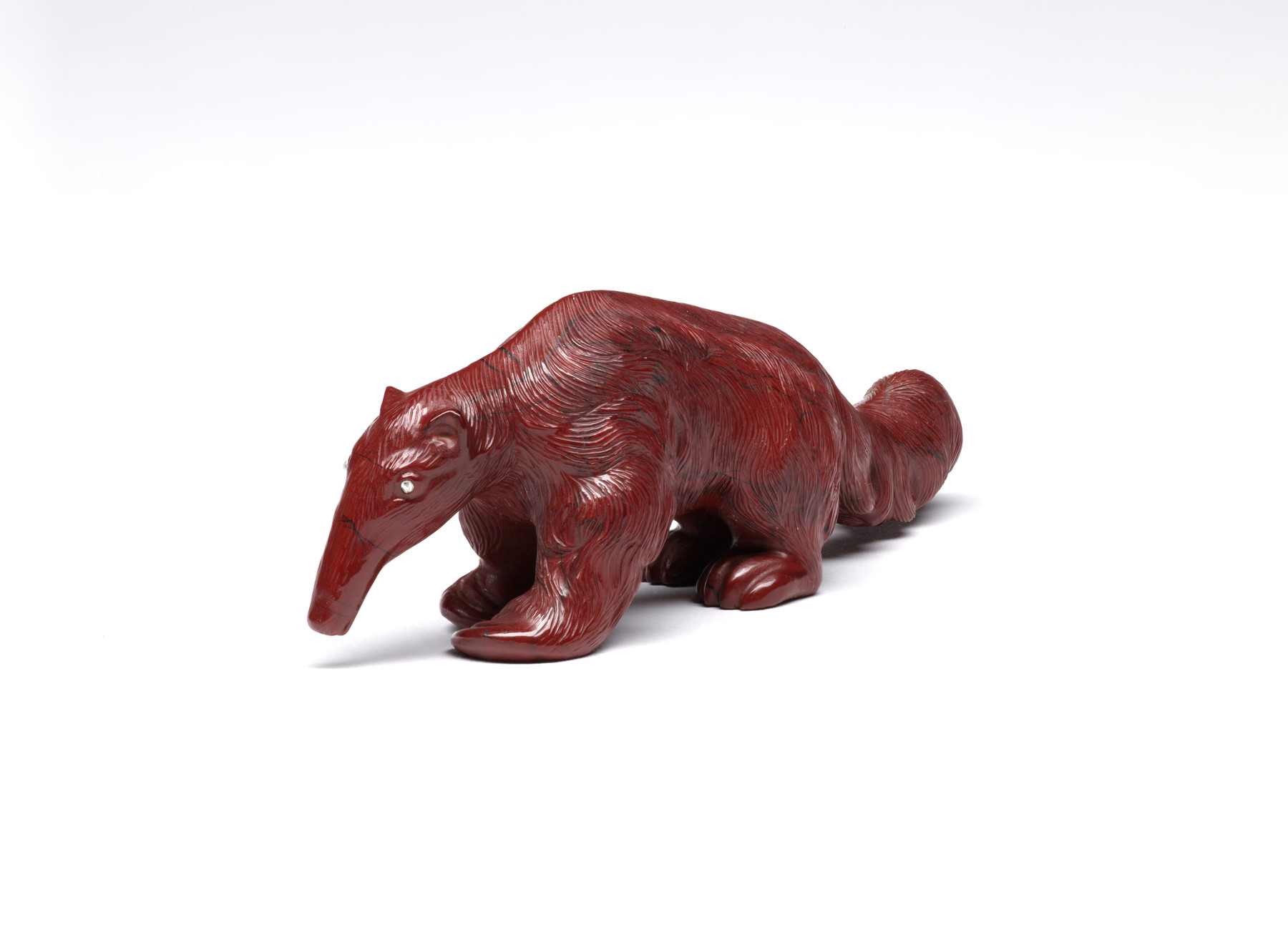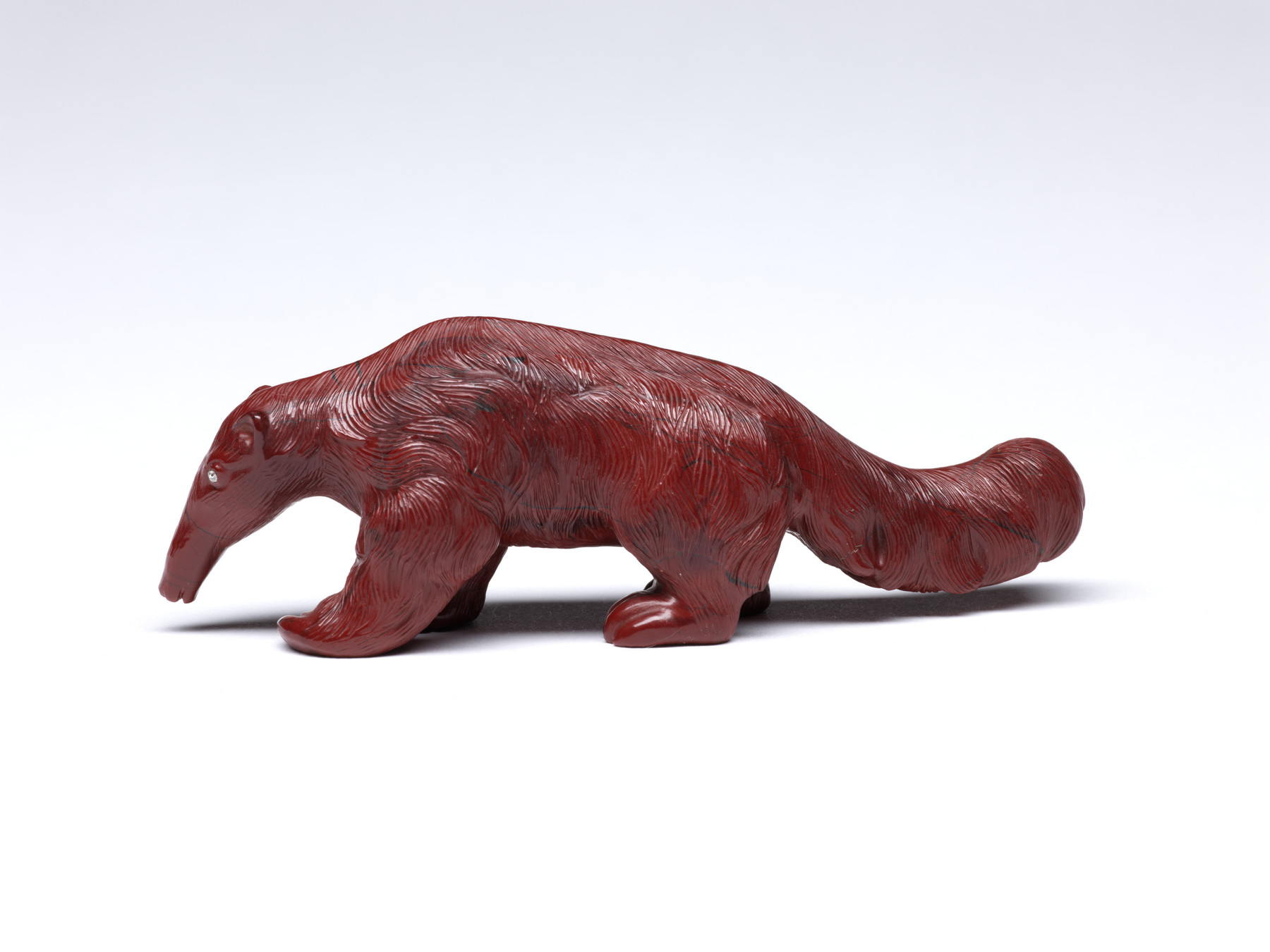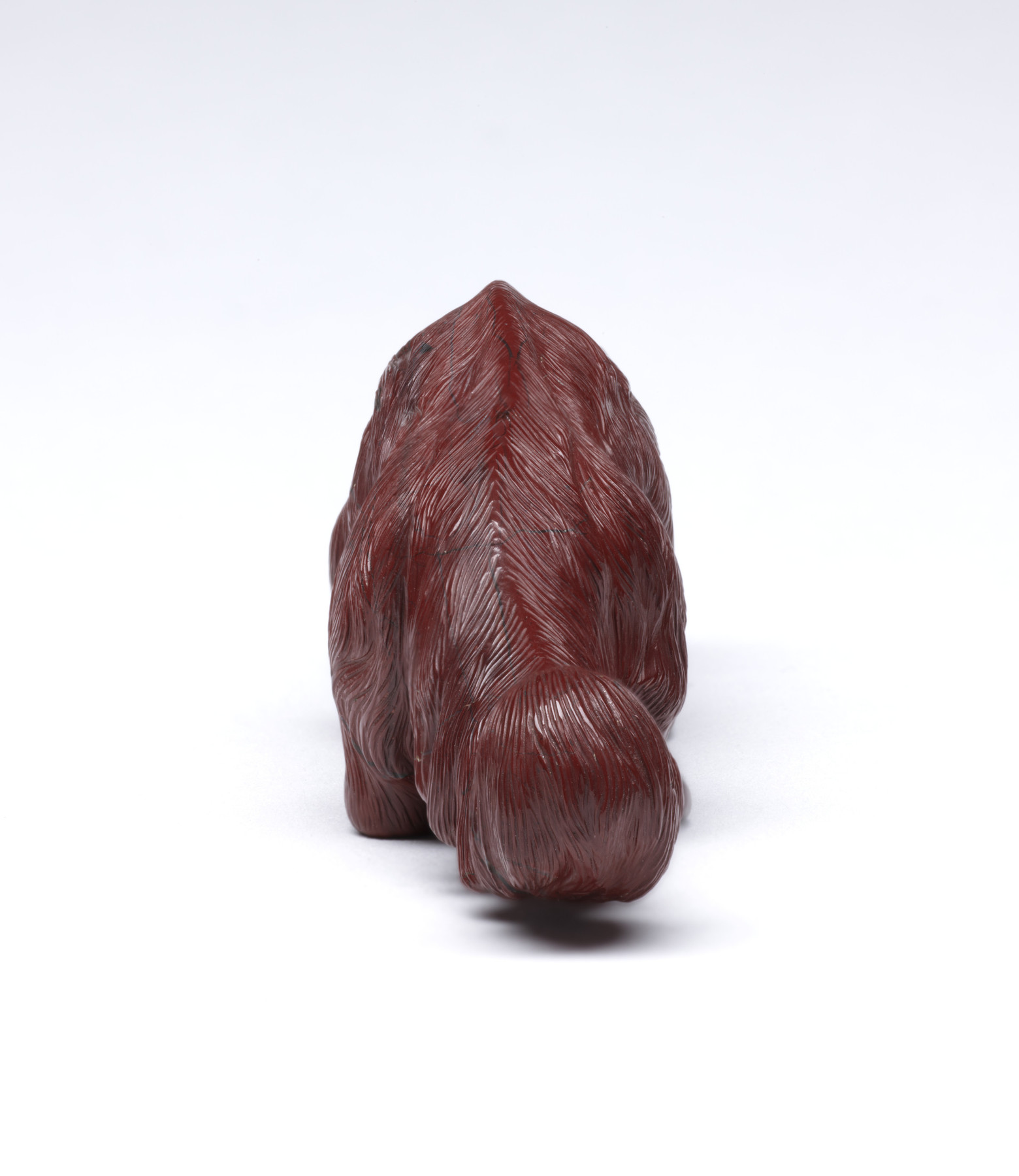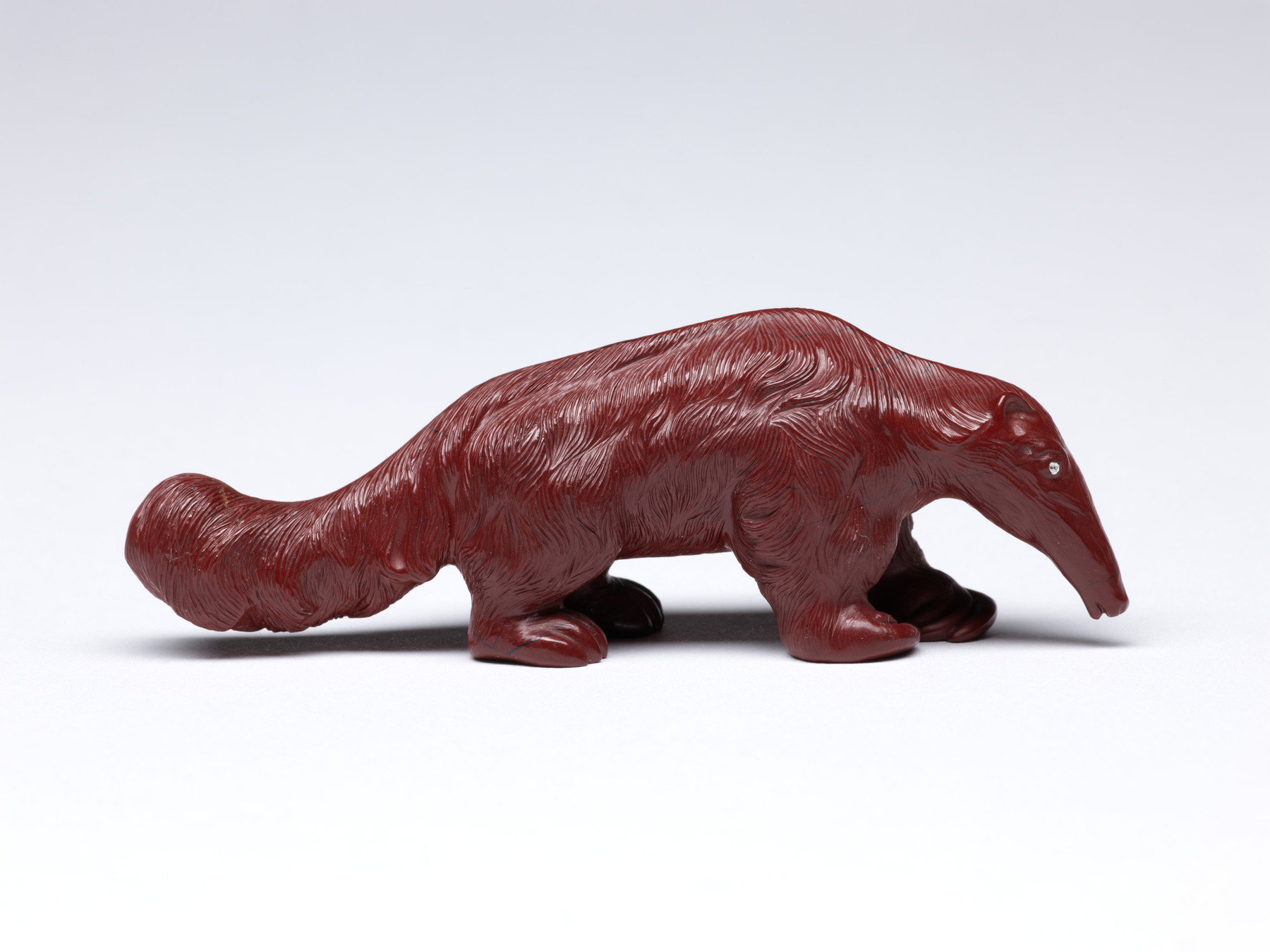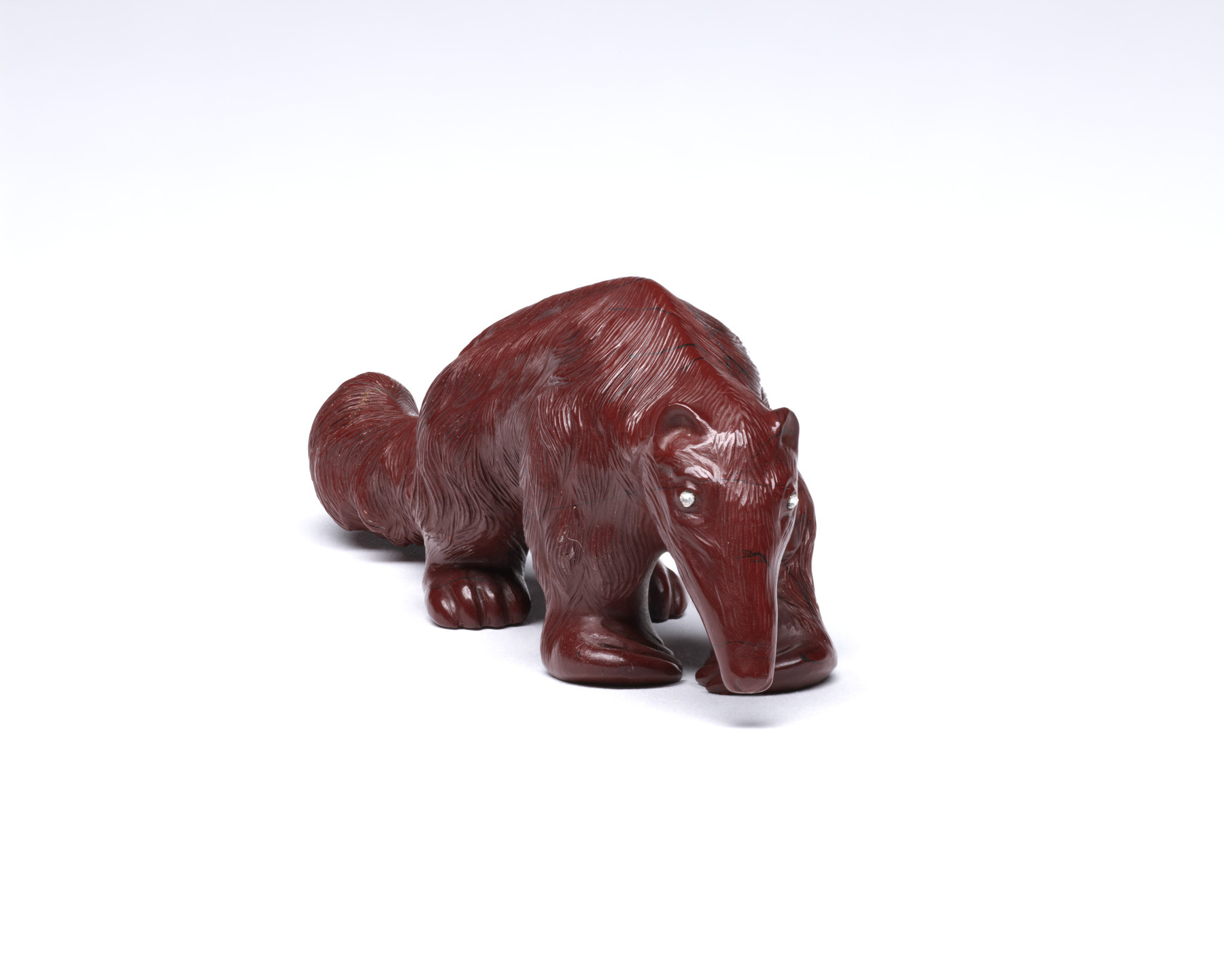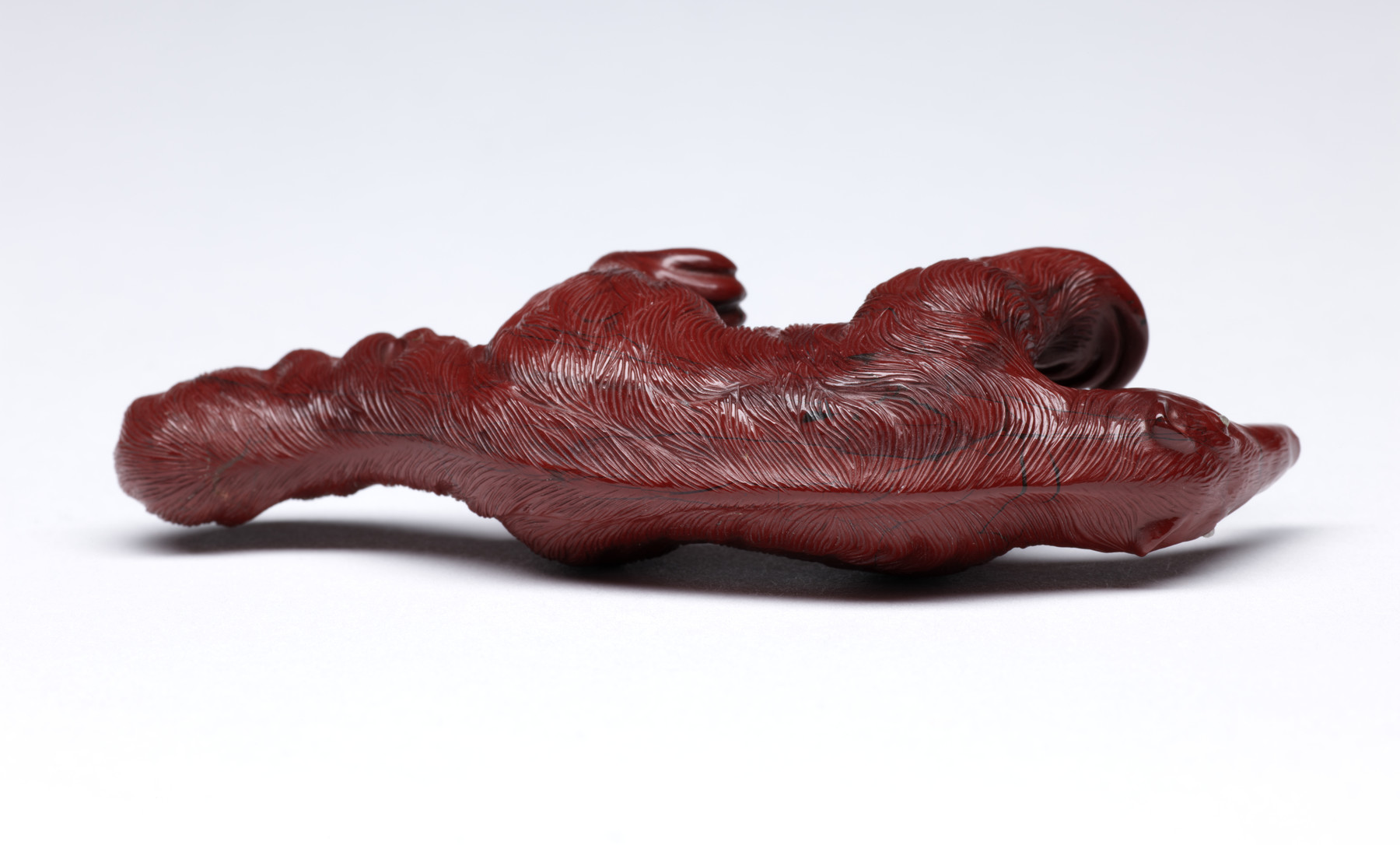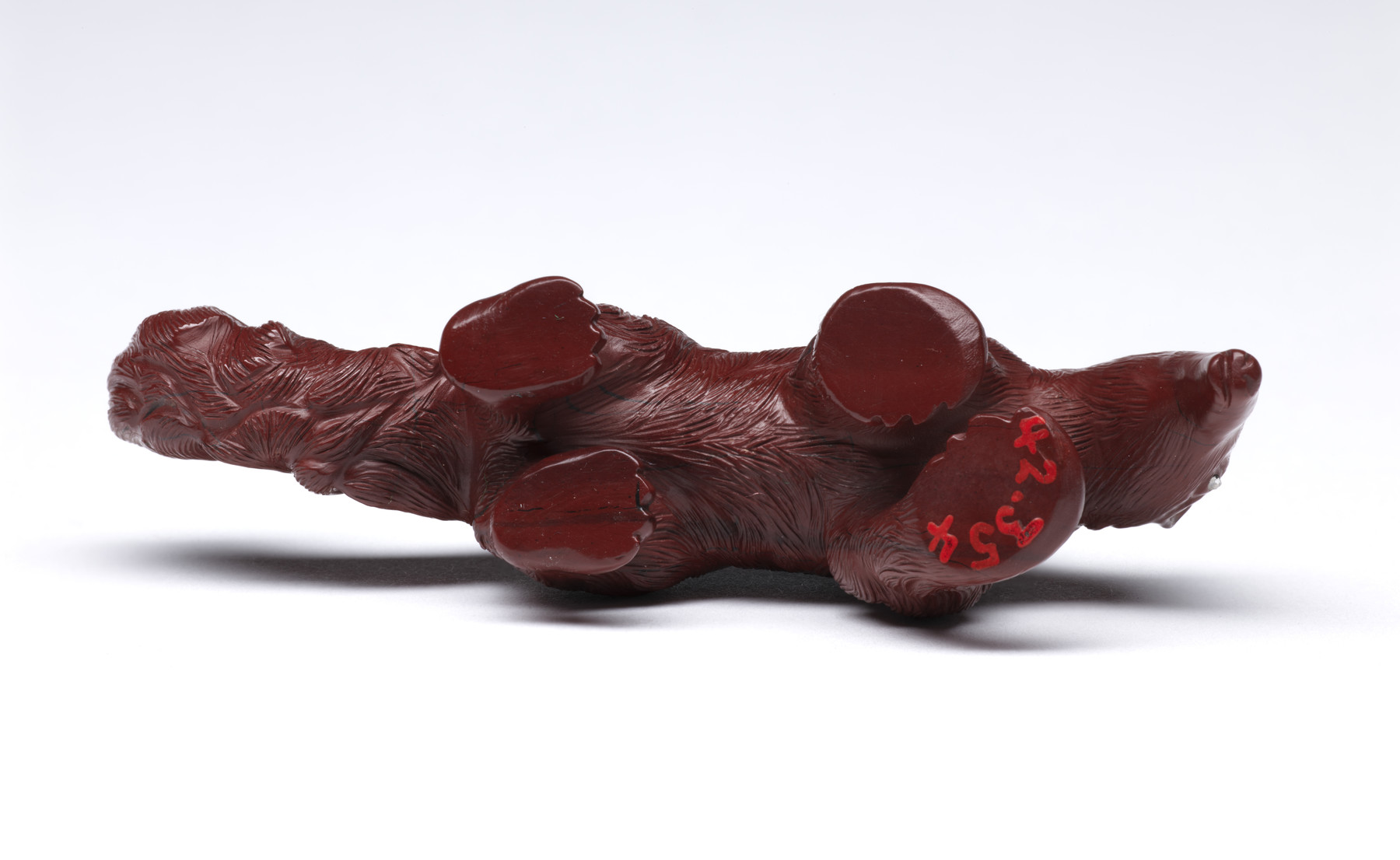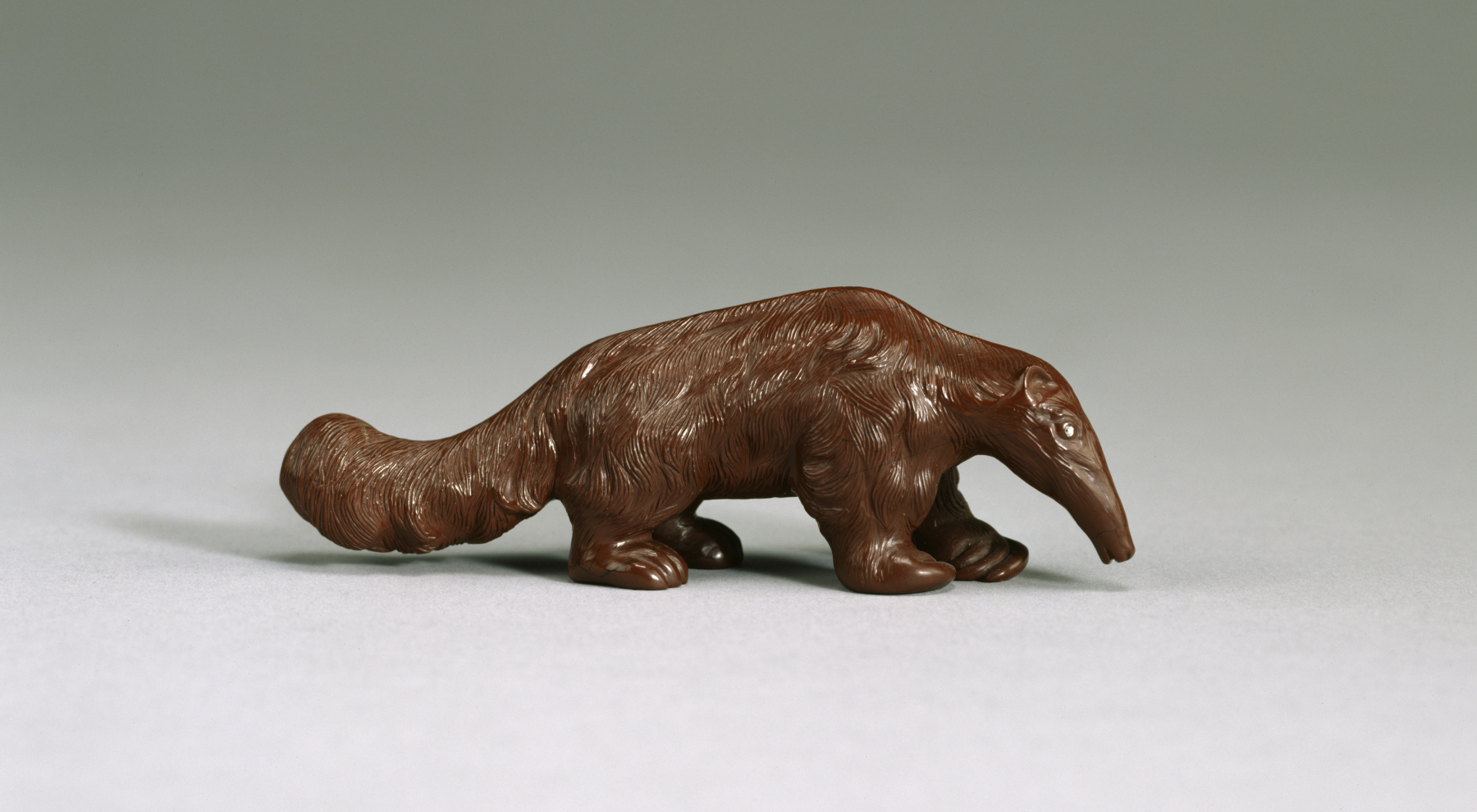Anteater
(18th and 19th Centuries )
This tiny diamond-eyed anteater was purchased by Henry Walters, founder of the Walters Art Museum, on a trip to St. Petersburg in 1900. The House of Fabergé began making hardstone animals in the 1890s and they proved popular with their elite clients. Queen Alexandra (wife of the British King Edward VII) built a large collection, and production peaked in the years immediately before the outbreak of the First World War in 1914. Objects such as this anteater were inspired by Japanese netsuke. Carl Fabergé owned over 500 of these. He married this admiration of Asian art with the rich Russian tradition of hardstone carving. The anteater is unusual among Fabergé's menagerie, although examples in bloodstone and quartz are also known.
Provenance
Provenance (from the French provenir, 'to come from/forth') is the chronology of the ownership, custody, or location of a historical object.
Henry Walters, Baltimore, 1900, by purchase; Walters Art Museum, 1931, by bequest.
Exhibitions
| 2017-2018 | Fabergé and the Russian Crafts Tradition: An Empire's Legacy . The Walters Art Museum, Baltimore. |
| 2014-2016 | From Rye to Raphael: The Walters Story. The Walters Art Museum, Baltimore. |
| 2003-2004 | The Fabergé Menagerie. The Walters Art Museum, Baltimore; Columbus Museum of Art, Columbus; Portland Art Museum, Portland. |
| 1996-1997 | Fabergé in America. The Metropolitan Museum of Art, New York; Fine Arts Museums of San Francisco, San Francisco; Virginia Museum of Fine Arts, Richmond; New Orleans Museum of Art, New Orleans; The Cleveland Museum of Art, Cleveland. |
| 1984 | Objects of Vertu: Precious Works of the Eighteenth Century. The Walters Art Gallery, Baltimore. |
Conservation
| Date | Description | Narrative |
|---|---|---|
| Examination | Cleaned | |
| Treatment | Cleaned. | |
| Examination | Cleaned in preparation for exhibition. | |
| Treatment | Cleaned in preparation for exhibition. |
Geographies
Russia, St. Petersburg (Place of Origin)
Measurements
H: 1 3/16 × W: 3 7/16 × D: 13/16 in. (3 × 8.7 × 2.1 cm)
Credit Line
Acquired by Henry Walters, 1900
Location in Museum
Not on view
Accession Number
In libraries, galleries, museums, and archives, an accession number is a unique identifier assigned to each object in the collection.
In libraries, galleries, museums, and archives, an accession number is a unique identifier assigned to each object in the collection.
42.354

